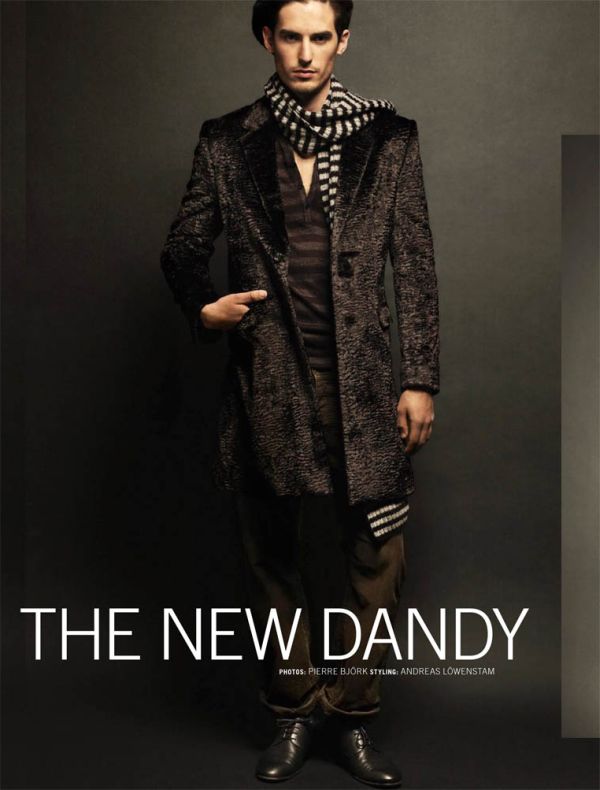My dissertation topic. I know ...I know.. everybody is busy with their owns!!! BUT, please... understand me as well. I'm going mad a bit! ...and need chocolate + champagne. aaaa!!!!
Proposal
“ The birth of the “new man” and its’ representation in 1980s and 1990s “style press” magazines.”
1980s was the time when all the ordinary men’s press in a broad sense became staid and monotonous. Moreover, most of the men’s magazines were orientated more to advertisers than readers and hadn’t got their own exclusive style to relate to different masculine audience. Individual publishers started searching for the new ways of men’s interests: from fashion to the newest technologies. Nick Logan, the publisher of some earlier magazines about music, was one of the small group of people who understood what a “new man” should look like and want from their surrounding. He launched one of the most successful men’s magazine The Face (1980) an after six years Arena (1986). The other significant issue was i-D launched by the Vogue art director Terry Jones in 1980. Those three magazines shaped three different angles of a “new man” – “avant-guardian”, “self explorer” or “innovator”. However, every individual understood and expressed it in their own way and, actually, that’s why this term became more popular. The “new man” had a lot of space to extend.
“…I don’t have any big philosophy of the “new man”. Take people like myself who became interested in fashion as mobs in the sixties, or the soul boys and Bowie fans of the 70s and 80s. If you become involved in fashion with that intensity I think it stays with you.” (Nick Logan, Campaign, 15/08/86)
I would say that the 80’s “style press” gave the unique basis for the upcoming men’s style press releases. When GQ (1988) and Loaded (1994) arrived to the market, it was quite clear that these two magazines tried to beat The Face, Arena and i-D by offering a much more tidy and groomed version of a “new man”. “Conde Nast and Natmags wanted to separate their magazines (GQ, Loaded, Esquire..) from the pornographic magazines and from the eighties titles such as The Face and Arena. And asked retailers to put their magazines next to the publications such as News Week, Time, The New Statesman and Society…” (B.Crewe, p.42).
In my dissertation work, firstly, I would like to analyze the nature of man and his tendency to self-care by having a quick look at the meaning of the term “dandy” and six styles that define English dandy (‘The Gentleman’, ‘Neo-Modernist’, ‘East End Flaneur’, ‘Celebrity Tailor’, ‘Terrace Casual’, ‘New Briton’). Secondly, I would like to explain the origin of the “new man” and the “style press” influence to it. I will look at every magazine separately and indicate the main features that influenced their success. Afterwards, I would like to compare eighties style press (The Face, Arena, i-D) with the later issues of men’s style magazines (GQ, Loaded), analyze how the readers have changed and what subcultures these magazines structured.

Proposal
“ The birth of the “new man” and its’ representation in 1980s and 1990s “style press” magazines.”
1980s was the time when all the ordinary men’s press in a broad sense became staid and monotonous. Moreover, most of the men’s magazines were orientated more to advertisers than readers and hadn’t got their own exclusive style to relate to different masculine audience. Individual publishers started searching for the new ways of men’s interests: from fashion to the newest technologies. Nick Logan, the publisher of some earlier magazines about music, was one of the small group of people who understood what a “new man” should look like and want from their surrounding. He launched one of the most successful men’s magazine The Face (1980) an after six years Arena (1986). The other significant issue was i-D launched by the Vogue art director Terry Jones in 1980. Those three magazines shaped three different angles of a “new man” – “avant-guardian”, “self explorer” or “innovator”. However, every individual understood and expressed it in their own way and, actually, that’s why this term became more popular. The “new man” had a lot of space to extend.
“…I don’t have any big philosophy of the “new man”. Take people like myself who became interested in fashion as mobs in the sixties, or the soul boys and Bowie fans of the 70s and 80s. If you become involved in fashion with that intensity I think it stays with you.” (Nick Logan, Campaign, 15/08/86)
I would say that the 80’s “style press” gave the unique basis for the upcoming men’s style press releases. When GQ (1988) and Loaded (1994) arrived to the market, it was quite clear that these two magazines tried to beat The Face, Arena and i-D by offering a much more tidy and groomed version of a “new man”. “Conde Nast and Natmags wanted to separate their magazines (GQ, Loaded, Esquire..) from the pornographic magazines and from the eighties titles such as The Face and Arena. And asked retailers to put their magazines next to the publications such as News Week, Time, The New Statesman and Society…” (B.Crewe, p.42).
In my dissertation work, firstly, I would like to analyze the nature of man and his tendency to self-care by having a quick look at the meaning of the term “dandy” and six styles that define English dandy (‘The Gentleman’, ‘Neo-Modernist’, ‘East End Flaneur’, ‘Celebrity Tailor’, ‘Terrace Casual’, ‘New Briton’). Secondly, I would like to explain the origin of the “new man” and the “style press” influence to it. I will look at every magazine separately and indicate the main features that influenced their success. Afterwards, I would like to compare eighties style press (The Face, Arena, i-D) with the later issues of men’s style magazines (GQ, Loaded), analyze how the readers have changed and what subcultures these magazines structured.
Comments